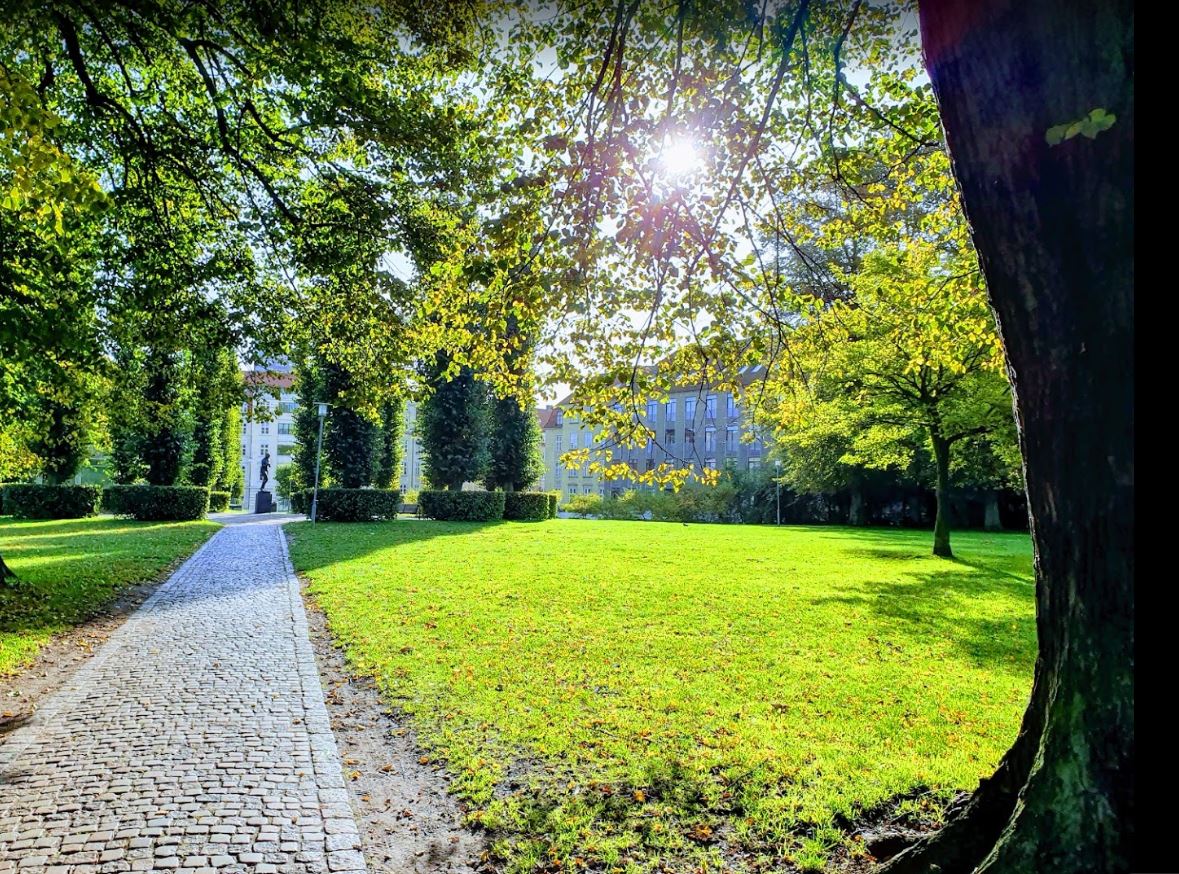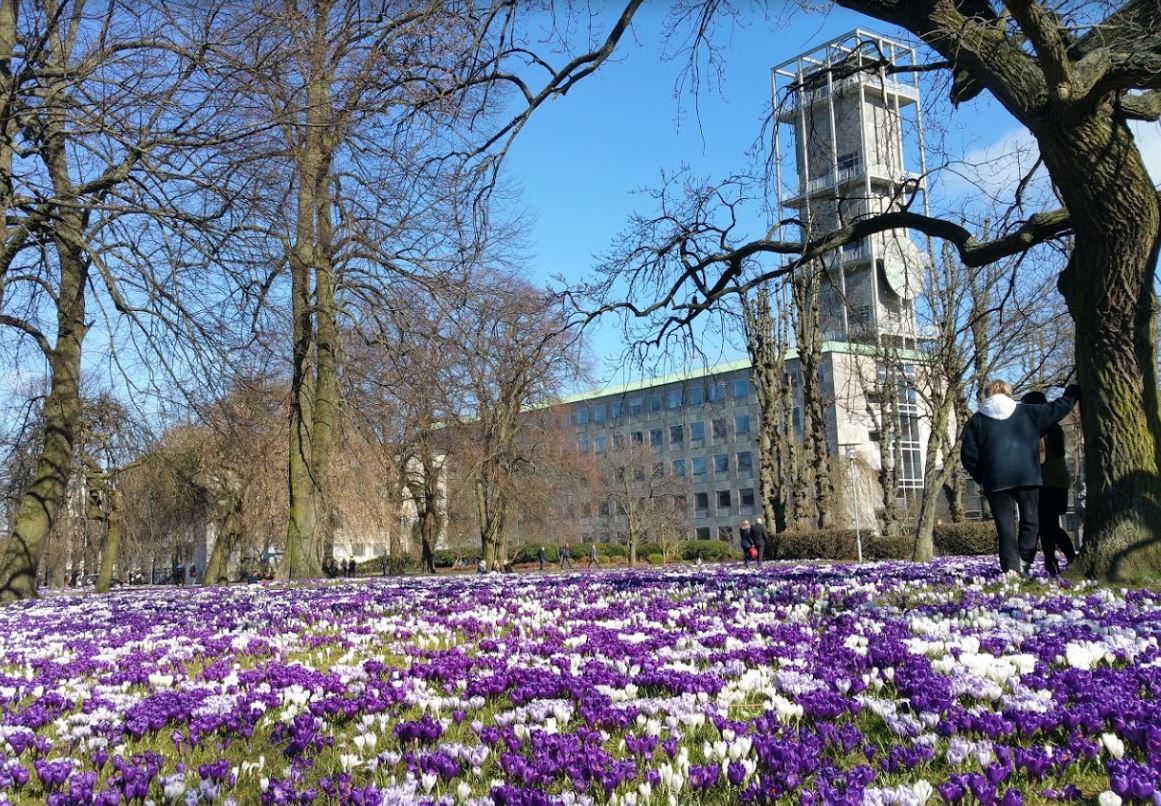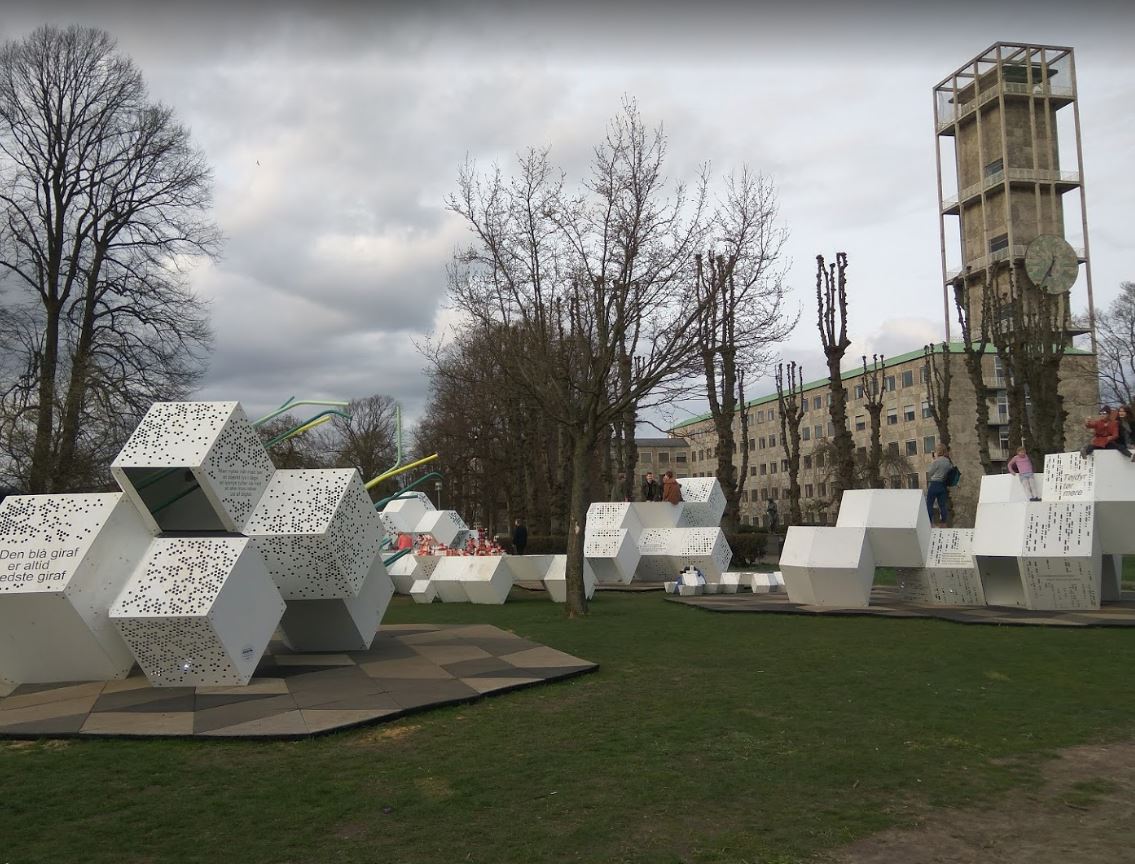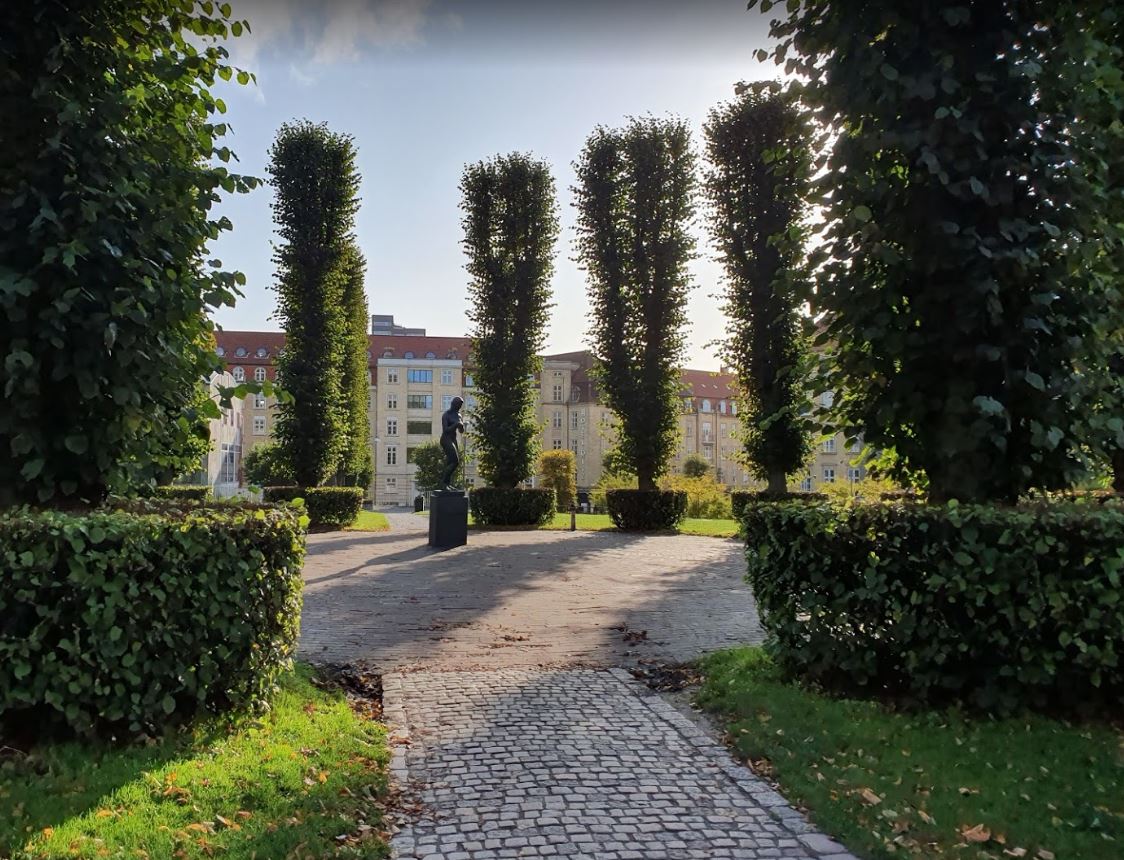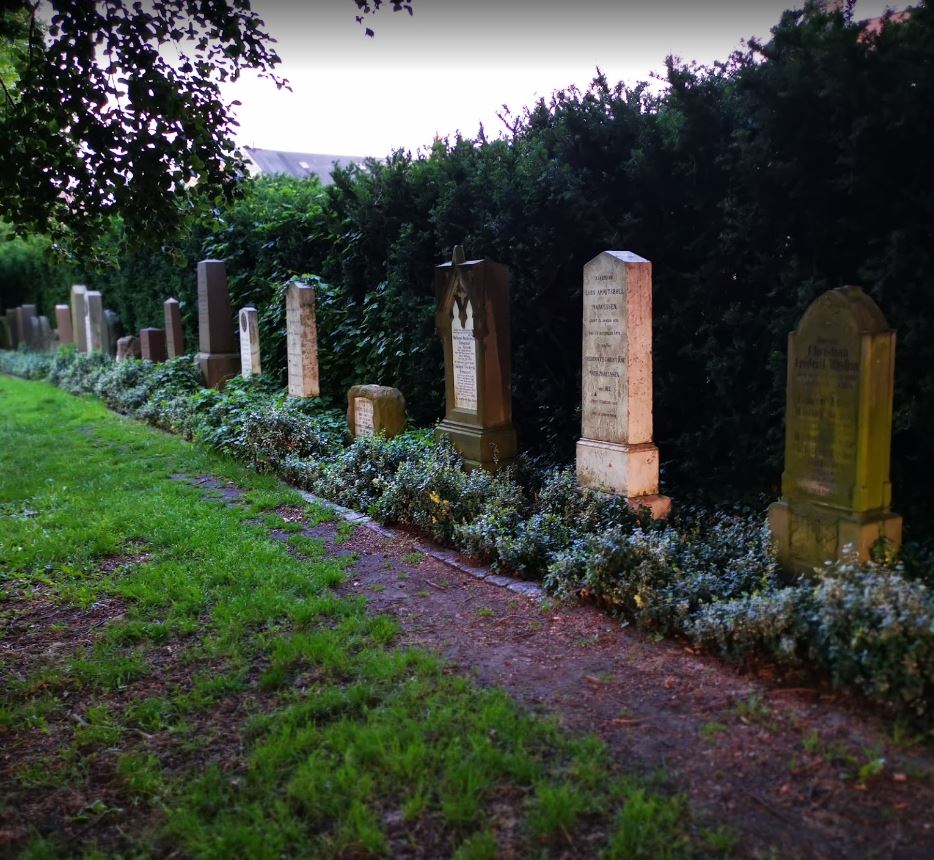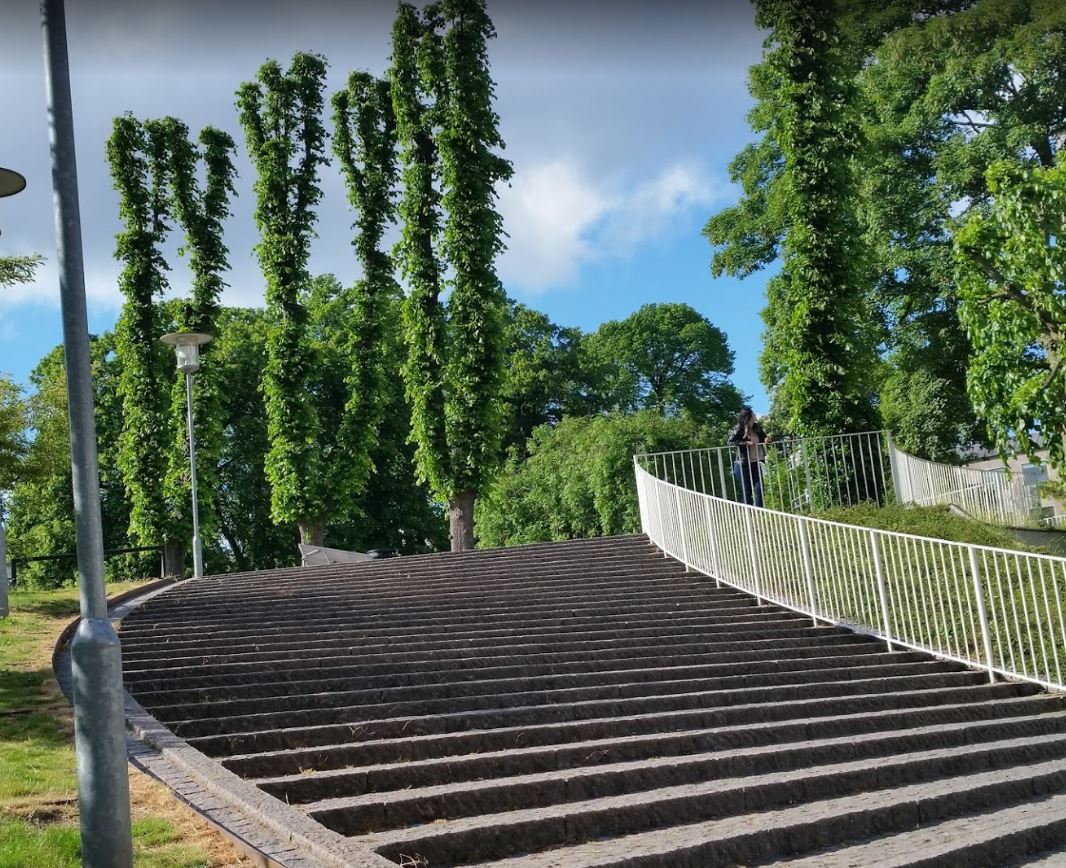It is a public park in the center of Aarhus, Denmark. The park is located in the city hall in the Andrei Bay district in Medteben, between the streets of Frederick Alley in the west and Park Ally in the east. The park is located within a picturesque semicircle of some of the city's most important cultural and political institutions; the concert hall, ARoS Museum of Art, Vester Allés barracks and the city hall. City Hall Park was listed alongside the adjacent City Hall on March 10, 1995.
The park features a large entrance in the southeast, towards the central station, the main entrance to the city. This section consists of a small plaza with a wide cobbled staircase and a tunnel with a lindon tree street cobbled across, leading across the garden, all the way to the Town Hall Square. There are other paths in the park, one of which leads to Ronda paved with tall linden polluted trees in the middle of the park.
The majority of City Hall Park consists of an open garden with large old trees scattered throughout the city, primarily southern beech and magnolia. Aside from grass, the grass is also cultivated with many types of flowers, including saffron and narcissus, and each flowering at separate times to keep the garden more interesting throughout the year. Next to the city hall building in the east, there is a small secluded garden area with benches. The garden is lined with rhododendron and consists of bottoms of perennials and green onions. The garden ideal is woods, leaves, and flowers with few exceptions in the colors of green, white and yellow.
City Hall Park features four sculptures, all of which are female characters: The Girl of 1940 (Girl of 1940), Wake Woman (Wake Woman), The Pregnant (The Fated) and Atalante (Atalanta).
"The Fated" was produced by sculptor Johannes C. Berg black granite from Bornholm. Standing in the middle of the Rotonda tree where it was placed on May 26, 1955 after being donated to the city "Wake Woman" are bronze statues designed by Kai Nielsen in 1920 depicting a young woman waking up from sleep, or alternatively, symbolizes a woman waking up in a girl. The statue originally stood in front of Atlion, but after a fire in 1943 it was moved and placed here in the park in 1948. "Girl in 1940" is a bronze sculptures sculptures made by Svind Ratsak and placed in the park by the municipality of Aarhus. 1941. Aerial bombardment during World War II inspired the statue, as it portrayed a young woman holding her arms in self-defense. "Atalanta", another bronze statue, depicting Atalanta from Greek mythology and placed in the southern part of the garden. It was made by sculptor and professor Inar Ozone Frank in 1919.
The City Hall Park area was previously the Søndre Kirkegård Cemetery, since 1818. The park was created in connection with the construction of the City Hall in 1941 but already in 1912, the City Council made a decision to redevelop the cemetery into a theme park within 25 years. The sale of graves was suspended with the last burial in 1926. The recent decision to build a new town hall meant that only a portion of the graveyard could be converted into a garden but the architects eventually made the garden part of their overall plans.
The bassin monastery is located where the former chapel chapel stands. The southern park section adjacent to the Scandic Plaza Hotel contained two partially covered bomb shelters, built during World War II. The area served as a children's playground in the neighborhood, during the 1950s and 1960s. The park itself was originally a closed area that the public was prohibited from using, with guards wearing military uniforms being imposed on the bases. In 1995, the park was listed alongside the City Hall, but in 1999 the park was redeveloped and replaced with all low-growth plants, although the overall shape and path structure is still as it was originally in the 1940s. In 2008-2009, the park was again renovated and the stadium was removed in favor of more open spaces.
The previous cemetery still has a presence in the garden, with some tombstones preserved for historical and aesthetic reasons. 35 of the original stones were preserved, but all were moved to a wall along the southernmost tip.
x
T
R
F
I
H
I
We have 16614 Parks Now ... The First and largest platform for green public parks
Rådhusparken
Rådhusparken
Park Allé 2, 8000 Aarhus, Denmark
Every Day : 24 Hours .
About Park
-
Preview
The park includes four sculpturesImportant Information
-
Every Day
24 Hours
-
Every Day
-
Intertainment Elements
Sports
Sitting places
Entertainment
Trips
Festivals
-
Main Elements
- Cleanliness
- Green areas
- Open spaces
- Open paths for walking
- Attractions


